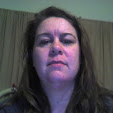Werlin, Nancy. 2004. Double Helix. New York: Dial Books. ISBN: 080372606.
The science fiction and mystery genres are melded into a new medical mystery subgenre in Nancy Werlin’s novel, DOUBLE HELIX. Genetic experimentation, in vitro fertilization and the complexities of bioethics form the science related core of the book. When Eli Samuels, a smart, athletic, not to mention tall, senior in high school is offered a job at Wyatt Transgenics, his father is not pleased and asks Eli to turn the job down. Partly because his father will not explain his request, Eli continues to work at the lab. On another front, Eli’s girlfriend would like to meet his parents, but Eli is reluctant to introduce her to them. Eli’s mother has Huntington ’s disease, a degenerative and terminal disease caused by too many repeats of sequences of DNA. While Eli tries to determine his father’s objection to his job, he meets Kayla, who seems very familiar to him. Eli also discovers that a connection does exist between them and that it involves his parents, Quincy Wyatt and experimental gene therapy. “Male and female features seemed to transmute, to meld into each other. My mother—Kayla—me.” (Werlin, 163-164.) Eli realizes that he is Kayla’s brother, but this knowledge also stirs a feeling of responsibility and curiosity within in him.
The novel is extremely readable and this is because the science in Werlin’s novel is not overbearing or confusing. “Werlin distills the scientific element to a manageable level.”(Publisher’s Weekly, 174.) Another focus of the book becomes the bioethics behind Eli’s and Kayla’s births. Sometimes these ethics seem absent but they are always complex. Eli says “I’m your brother.”(Werlin, 231.) From this realization, Werlin is able to show a strong sense of responsible that runs through Eli. “My responsibility. Because I am my father’s son. Because I choose, like he did, not to walk away. Because you are more than your genes. Because you are human. Because you are worth it.” (Werlin, 231-232.) In the end, Wyatt escapes justice, but Eli and Kayla are able to find more siblings who were born to different families. Eli goes off to college and meets the professor recommended to him by a coworker. “There’s a difference between using gene therapy for the treatment of existing medical conditions and using our growing, but far from perfect, knowledge of genes—or of humanity—to declare that we absolutely know who has--and who hasn’t—the right to live.” (Werlin, 245.)
One critic pointed that the “characterizations feel somewhat incomplete.”(Publisher’s Weekly, 174.) The main focus of the novel is on Eli and Kayla, the teenagers, so in my opinion, it is really the adults, Mr. Samuels and Wyatt, who are a little flat. “The plot moves at a tantalizing clip, with secrets revealed in tiny increments, an hints and clues neatly planted.” (Publisher’s Weekly, 174.) The plot is tight and suspenseful and horrifying when it is revealed that more children, some who have Huntington’s and a couple who do not, have been born as a result of Wyatt’s experiment. “The story’s climax appeals to reason and love for humanity without resorting to easy answers.” (Publisher’s Weekly, 174.) The book’s end will make readers stop and think about their beliefs about medicine and the imperfections that make us human.
Reference List:
2004. Review of Double Helix by Nancy Werlin. Publisher’s Weekly Vol. 251 Issue
7, (15 February), 173-174.
Werlin, Nancy. 2004. Double Helix. New York: Dial Books.
skip to main |
skip to sidebar
Orinigally created as an assignment for TWU's SLIS LS 5623 Fall, 2004. I decided I would just go on reading and reviewing my favorite Teen Lit.
Blog Archive
-
▼
2004
(21)
-
▼
November
(8)
- Topic 5: Mary, Bloody Mary by Carolyn Meyer
- Topic 5: The Printing Press by Milton Meltzer
- Topic 5: Hole in My Life by Jack Gantos
- Topic 5: Esperanza Rising by Pam Munoz Ryan *one ...
- Topic 4: Ender's Game by Orson Scott Card
- Margaret Mahy--New Zealand Writer
- Topic 4: Double Helix by Nancy Werlin
- topic 4: Others See Us by William Sleator
-
▼
November
(8)

